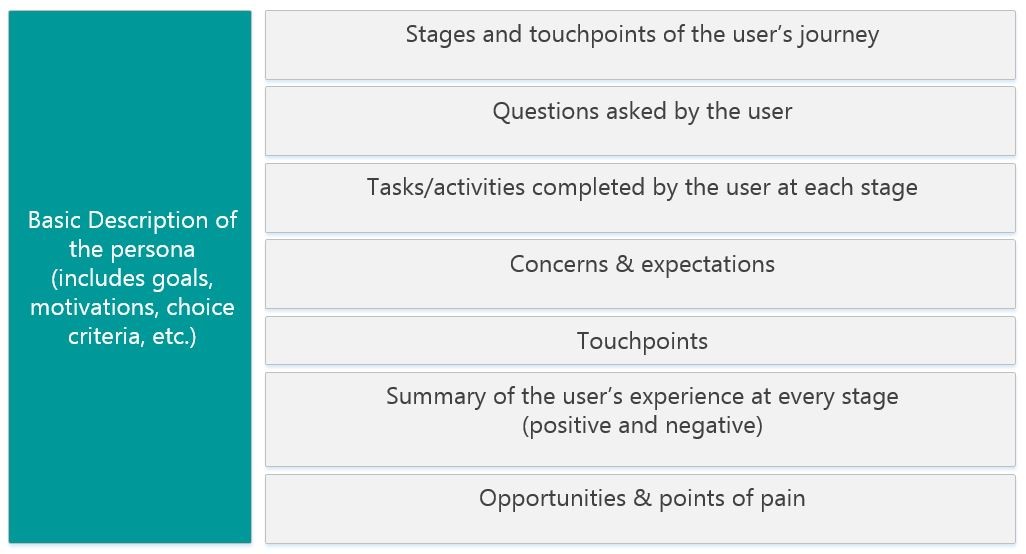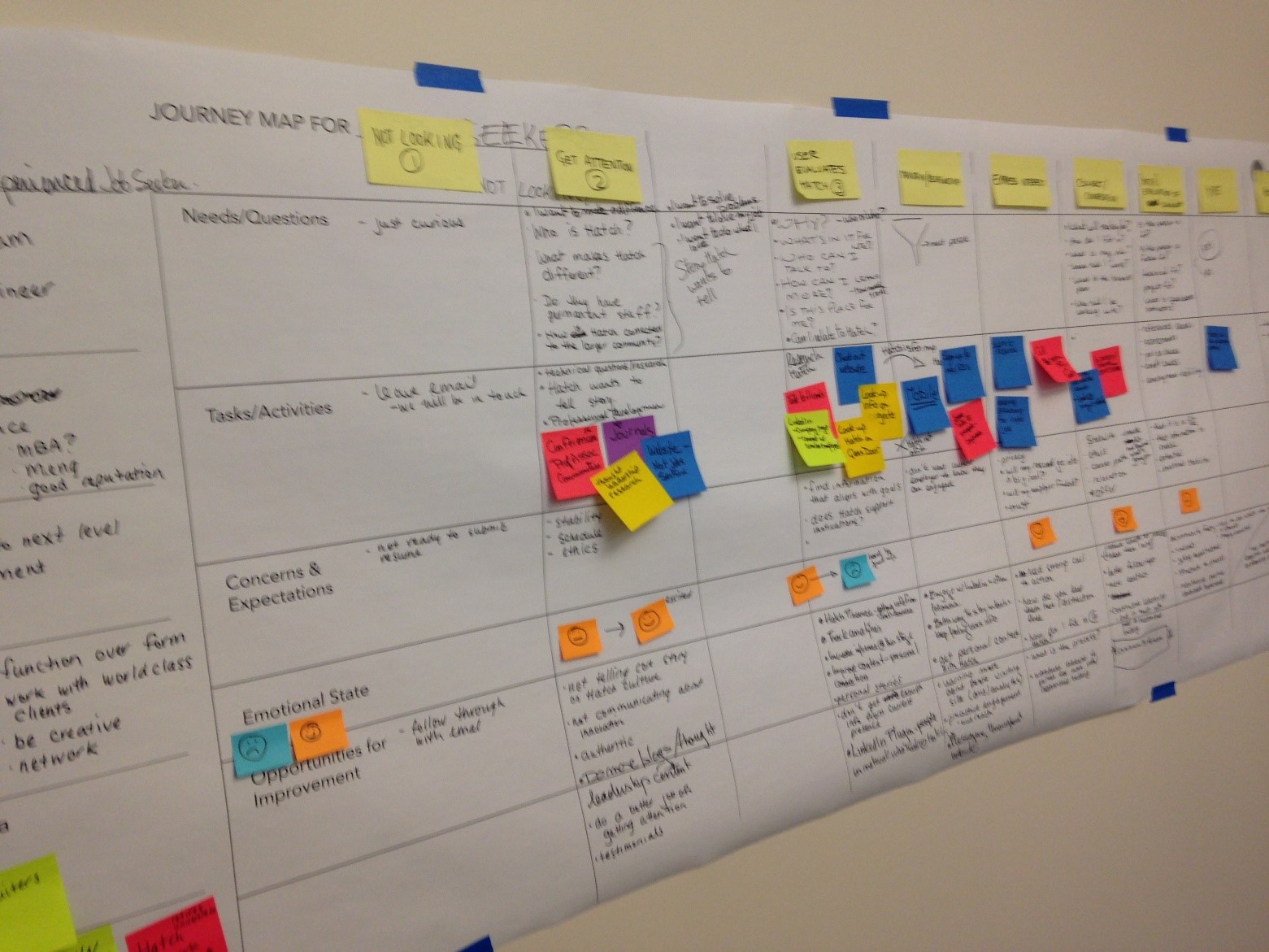Post-its, Sharpies and stakeholders. What do these three things have in common?
All three are staples in the toolkit of any journey-mapping strategist here at Valtech. So what exactly is journey-mapping? It's a method of storytelling used to help organizations learn about their customers' experience.
A journey mapping exercise focuses on customer goals and objectives rather than those of your organization. If you've decided to move your website, web application or other customer interaction in a more customer-focused direction, a journey map should be your first step.
What Does Jurney Mapping Do?
The journey mapping process helps us:
- identify gaps in content and functionality – allows us to remove barriers to users
- ensure that the user gets the information they need from the website
- breakdown silos in your organization as it becomes clear to see all the ways a customer interacts with your organization and website
The ultimate goal is to ensure that the website supports the full customer lifecycle. The knowledge uncovered through the journey mapping exercise feeds directly into how we plan the site structure, the information architecture and the development road map so that we address the biggest pain points and quickest wins for your site visitors before any issues that do not directly affect the journey.
Journey mapping in action
For example, we worked with a large North American engineering firm who had identified their two key personas as potential corporate clients and job seekers. After working through the journey mapping exercise, they recognized a new way of organizing their content and crafting their message so that both clients and job seekers could easily see their organization’s strengths and differentiators without having to duplicate their content creation.
In another case, we worked with an industrial manufacturer whose business objective was to increase the conversion rate of customers browsing the website to strong sales leads. They have a strongly delineated organizational structure that had led them to create two distinct navigation paths on their website. These navigation paths were not clear to the average site visitor so the resulting sales leads were often misdirected or not followed through.
The journey mapping exercise gave them a strong business case to break down their content silos and to restructure their content in a customer focused manner with clear calls-to-action resulting in higher conversions into the correct sales lead funnel.
Who Should Participate in the Journey Mapping Exercise?
The journey map exercise is focused on the customer experience with your organization so it is critical that all members of the organization that interact with customers participate in the exercise. This might include:
- members of the call centre or customer service
- marketing team members
- persons responsible for analytics review and monitoring
- sales team members
- product developers
The activity works best in small groups of 3-6 participants.
What does a journey map include?

Personas
Developing personas is the critical first step in the journey mapping process. A persona is an archetype of your typical website user. Each persona represents a target audience of your website. Crafting personas means you’ll want to outline the behaviours, needs and demographic information of your core target audiences, and then brainstorm the key tasks each persona may complete when interacting with your organization and website.
Stages of the user’s journey
The stages are the gates your user passes through on the way to successfully completing a transaction with your organization. For a simple ecommerce transaction the stages may be:
- Awareness that they have a purchase need and recognition that your organization may be able to fill that need.
- Consideration of your organization’s offerings. This may also include narrowing down their purchase options between your organization and your competitors.
- Purchase = the completion of the transaction.
- Service is all the support a customer might receive from your organization after their purchase. This might include anything from a call to your 1-800 line or self-service shipping tracking.
- Loyalty includes everything from subscription to your newsletter and/or recommending your products through social media.
The customer’s experience is addressed through:
- Questions asked by user
- Task activities completed by user
- Concerns & expectations
Touch points
These are the interactions a customer has with your organization. When thinking of the touchpoints be specific and keep it customer focused. For example, “online chat” versus “online.”
Summary of user’s experience (positive and negative)
You can use a scale (5 = completely satisfied, 1=completely frustrated) or simply a happy face and sad face to identify the users satisfaction.
Opportunities & points of pain
When reviewing the user’s touch points at each stage you may see opportunities that might better support their goals or help your organization. For example: we often see the opportunity to get better analytic data on the customer’s interactions with organization’s website so that we can better implement the DMS personalization.

Pitfalls to avoid
The journey mapping process is not perfect but you can greatly increase its value if you avoid the following pitfalls:
- Not having clear personas established before starting the activity
- Establishing too many touch points and/or not being specific enough
- Including too many stages
- Not giving enough time to the activity
- Focusing what your organization wants the user to do rather than what the user actually does






